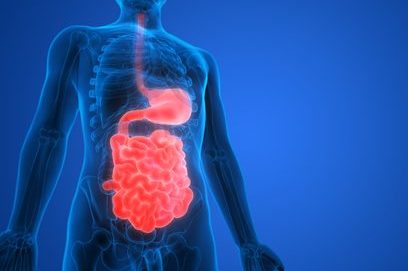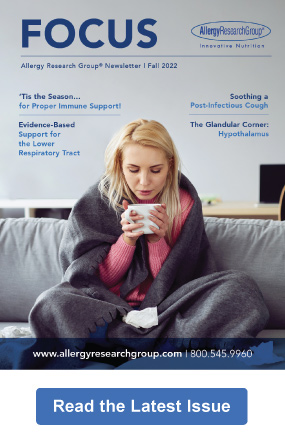Leaky Gut, Autoimmunity, and Lipopolysaccharide (LPS) – Oh My!
Share this post
Harm from one kind of bacteria, healing from another
What’s LPS, and why should I care?
Lipopolysaccharide, or LPS, is the major component of the outer membrane of gram-negative bacteria. LPS contributes to the structural integrity of the bacteria, protecting the membrane from certain kinds of chemical attack. LPS is of crucial importance to gram-negative bacteria, and for the most part, it remains associated with the cell wall until disintegration of the organism.
LPS is also known as endotoxin, which, as the name implies, is toxic. So, while LPS is a good and necessary thing for the bacteria they’re found on, they can be harmful to us humanoids, although small amounts are necessary for stimulation of normal immunity. These products of bacterial die-off not only stimulate a further immune response and inflammation, they also can adversely affect organ and systemic function, sometimes critically.[1],[2] A Jarisch-Herxheimer reaction (also commonly referred to as “Herxing” or “die-off”) is the symptoms that transpire due to the uncontrolled release of endotoxin, as well as endotoxin-like products, during lysis of the gram-negative bacteria which many natural and pharmaceutical antibiotics impact.[3]
Molecular mimicry: how LPS can trigger an autoimmune response
Lipooligosaccharides (LOS) are shorter versions of bacterial LPS that also are found in the outer membrane of some types of gram-negative bacteria, such as Neisseria spp. and Haemophilus spp. LOS molecules can help these bacteria be less visible to the human immune system, as it makes the bacteria look like a protein or molecule that is normal in the human body. This can help it evade the body’s immune cells which respond to the infection. This concept is known as molecular mimicry and is kind of like hiding the bacteria in camouflage. Unfortunately, when the immune system is activated, this molecular mimicry also can trigger an autoimmune response in the body, as the immune system responders simultaneously attack the similar-looking molecule or protein that is normal to the human body.[4]
Molecular mimicry can trigger an autoimmune response in the body, as the immune system responders simultaneously attack the similar-looking molecule or protein that is normal to the human body.
For example, Campylobacter jejuni is a common gram-negative bacterium that can cause gastrointestinal infections in humans. C. jejuni exhibits molecular mimicry which can induce autoreactive antibodies to brain molecules known as gangliosides.[5] The core LPS of C. jejuni are associated with the development of the neurological disorder known as Guillain-Barré syndrome. Collective data suggest that the antibodies are induced by an infection with C. jejuni, and subsequently react with nerve tissue causing damage.[6] However, an immune response to LPS in general is not in itself autoimmunity unless aspects of molecular mimicry and self-immune reaction are at play.
LPS and leaky gut
As an endotoxin, LPS activates many types of infection-fighting cells in the human body, which help the body fight off the bacterial invaders, but it also creates inflammation in the process. When this inflammatory response occurs in the gut, it can harm the gut lining.[7],[8] The gut lining then becomes more permeable (commonly referred to as “leaky gut“) and endotoxin can transfer through into circulation, triggering a systemic immune response, inflammation, and burdening the liver and kidneys.[9] Consumption of a high-fat diet also affects the balance of the gut microbiota and has been shown to increase endotoxemia (measured by plasma LPS), as well as the related expression of inflammatory cytokines.[10],[11] There is evidence that the damage to the gut caused by LPS from gram-negative enterobacteria plays a role in a variety of diseases, including depression,[12] chronic fatigue syndrome,[13] liver disease,[14] heart disease,[15] obesity,[16] and even infertility.[17]
Zonulin and leaky gut
Zonulin, a protein that modulates intestinal permeability, is upregulated in several autoimmune diseases.[18],[19],[20],[21] Zonulin upregulation seems to precede the onset of the disease, providing a possible link between increased intestinal permeability, environmental exposure to non-self antigens, and the development of autoimmunity in genetically susceptible individuals.[22] Gastrointestinal infections have also been shown to increase the production of zonulin and are accompanied by altered tight junction integrity. Altered zonulin expression in genetically susceptible individuals has been associated with autoimmune diseases, inflammatory conditions, and cancer – both in the digestive tract as well as in other parts of the body.[23]
Altered zonulin expression in genetically susceptible individuals has been associated with autoimmune diseases, inflammatory conditions, and cancer – both in the digestive tract as well as in other parts of the body.
One way to assess intestinal permeability through lab testing is to screen for an immune response to LPS and the proteins associated with the intestinal lining.[24] An immune response to LPS in combination with increased permeability may suggest that gram-negative enterobacteria are a source of immune activation and inflammation.
Do probiotics contain LPS?
Probiotics, by definition, are viable, non-pathogenic microorganisms (bacteria or yeast) that are able to reach the intestine in sufficient numbers to convey benefit to the host. This definition may be expanded to include non-viable (ie killed) micro-organisms (also known as immunobiotics) as some of these bacterial cell-wall fragments also have been demonstrated to deliver immune-supportive health benefits. Probiotics may have an effect on immunity, gut health, and many other things both systemic and local.[25]
Probiotics may be able to both prevent and correct problems associated with LPS, autoimmunity, and leaky gut. The most commonly used probiotics Lactobacillus spp. and Bifidobacterium spp. are gram-positive bacteria and are therefore do not contain LPS.[26] (Remember, LPS is found on gram-negative bacteria; not on gram-positive.)
Some strains of probiotics have been shown to improve intestinal tight junctions, which also may reduce LPS-associated endotoxemia.[27] Bifidobacterium spp. in combination with lactoferrin (a glycoprotein found in dairy that has antimicrobial and chelation properties) has been shown to reduce intestinal endotoxin levels.[28] Both live and heat-killed Lactobacillus rhamnosus GG have been shown to decrease LPS-induced proinflammatory mediators and increase anti-inflammatory mediators.[29] Many botanicals, such as quercetin and berberine both inhibit intestinal absorption of endotoxin by their action on tight junctions in the intestinal lining.[30],[31]
Click here to see References
[1] Maloy AL, Black RD, Segurola RJ Jr. Lyme disease complicated by the Jarisch-Herxheimer reaction. J Emerg Med. 1998 May-Jun;16(3):437-8.
[2] Webster G, et al. Jarisch-Herxheimer reaction associated with ciprofloxacin administration for tick-borne relapsing fever. Pediatr Infect Dis J. 2002 Jun;21(6):571-3.
[3] Butler T. The Jarisch-Herxheimer Reaction After Antibiotic Treatment of Spirochetal Infections: A Review of Recent Cases and Our Understanding of Pathogenesis. Am J Trop Med Hyg. 2017 Jan 11;96(1):46-52.
[4] Moran AP, et al. Molecular mimicry of host structures by bacterial lipopolysaccharides and its contribution to disease. FEMS Immunol Med Microbiol. 1996 Dec 1;16(2):105-15.
[5] Moran AP. The role of endotoxin in infection: Helicobacter pylori and Campylobacter jejuni. Subcell Biochem. 2010;53:209-40.
[6] Moran AP, Prendergast MM. Molecular mimicry in Campylobacter jejuni and Helicobacter pylori lipopolysaccharides: contribution of gastrointestinal infections to autoimmunity. J Autoimmun. 2001 May;16(3):241-56.
[7] Alexander C, Rietschel ET. Bacterial lipopolysaccharides and innate immunity. J Endotoxin Res. 2001;7(3):167-202
[8] Heumann D, Roger T. Initial responses to endotoxins and Gram-negative bacteria. Clin Chim Acta. 2002 Sep;323(1-2):59-72.
[9] Zinchuk V, Zinchuk O, Okada T. Experimental LPS-induced cholestasis alters subcellular distribution and affects colocalization of Mrp2 and Bsep proteins: a quantitative colocalization study. Microsc Res Tech. 2005 Jun 1;67(2):65-70.
[10] Turnbaugh PJ, et al. An obesity-associated gut microbiome with increased capacity for energy harvest. Nature. 2006 Dec 21;444(7122):1027-31.
[11] Cani PD, et al. Metabolic endotoxemia initiates obesity and insulin resistance. Diabetes. 2007 Jul;56(7):1761-72.
[12] Maes M, et al. The gut-brain barrier in major depression: intestinal mucosal dysfunction with an increased translocation of LPS from gram negative enterobacteria (leaky gut) plays a role in the inflammatory pathophysiology of depression. Neuro Endocrinol Lett. 2008 Feb;29(1):117-24.
[13] Maes M, et al. Increased serum IgA and IgM against LPS of enterobacteria in chronic fatigue syndrome (CFS): indication for the involvement of gram-negative enterobacteria in the etiology of CFS and for the presence of an increased gut-intestinal permeability. J Affect Disord. 2007 Apr;99(1-3):237-40.
[14] Bode C, Bode JC. Activation of the innate immune system and alcoholic liver disease: effects of ethanol per se or enhanced intestinal translocation of bacterial toxins induced by ethanol? Alcohol Clin Exp Res. 2005 Nov;29(11 Suppl):166S-71S.
[15] Sandek A, et al. The emerging role of the gut in chronic heart failure. Curr Opin Clin Nutr Metab Care. 2008 Sep;11(5):632-9.
[16] Piya MK, et al. Metabolic endotoxaemia: is it more than just a gut feeling? Curr Opin Lipidol. 2013 Feb;24(1):78-85.
[17] Tremellen K, et al. Metabolic endotoxaemia – a potential novel link between ovarian inflammation and impaired progesterone production. Gynecol Endocrinol. 2015 Apr;31(4):309-12.
[18] El Asmar R, et al. Host-dependent zonulin secretion causes the impairment of the small intestine barrier function after bacterial exposure. Gastroenterology. 2002 Nov;123(5):1607-15.
[19] Sapone A, et al. Zonulin upregulation is associated with increased gut permeability in subjects with type 1 diabetes and their relatives. Diabetes. 2006 May;55(5):1443-9.
[20] Clemente MG, et al. Immune reaction against the cytoskeleton in coeliac disease. Gut. 2000 Oct;47(4):520-6.
[21] Pedreira S, et al. Significance of smooth muscle/anti-actin autoantibodies in celiac disease. Acta Gastroenterol Latinoam. 2005;35(2):83-93.
[22] Fasano A. Zonulin, regulation of tight junctions, and autoimmune diseases. Ann N Y Acad Sci. 2012 Jul;1258:25-33.
[23] Fasano A. Zonulin and its regulation of intestinal barrier function: the biological door to inflammation, autoimmunity, and cancer. Physiol Rev. 2011 Jan;91(1):151-75.
[24] Poxton IR. Antibodies to lipopolysaccharide. J Immunol Methods. 1995 Oct 12;186(1):1-15.
[25] Boirivant M, Strober W. The mechanism of action of probiotics. Curr Opin Gastroenterol. 2007 Nov;23(6):679-92.
[26] Hakansson A, Molin G. Gut microbiota and inflammation. Nutrients. 2011 Jun;3(6):637-82.
[27] Ohland CL, Macnaughton WK. Probiotic bacteria and intestinal epithelial barrier function. Am J Physiol Gastrointest Liver Physiol. 2010 Jun;298(6):G807-19.
[28] Griffiths EA, et al. In vivo effects of bifidobacteria and lactoferrin on gut endotoxin concentration and mucosal immunity in Balb/c mice. Dig Dis Sci. 2004 Apr;49(4):579-89.
[29] Li N, et al. Live and heat-killed Lactobacillus rhamnosus GG: effects on proinflammatory and anti-inflammatory cytokines/chemokines in gastrostomy-fed infant rats. Pediatr Res. 2009 Aug;66(2):203-7.
[30] Suzuki T, Hara H. Quercetin enhances intestinal barrier function through the assembly of zonula [corrected] occludens-2, occludin, and claudin-1 and the expression of claudin-4 in Caco-2 cells. J Nutr. 2009 May;139(5):965-74.
[31] Gu L, et al. Berberine ameliorates intestinal epithelial tight-junction damage and down-regulates myosin light chain kinase pathways in a mouse model of endotoxinemia. J Infect Dis. 2011 Jun 1;203(11):1602-12.
The information provided is for educational purposes only. Consult your physician or healthcare provider if you have specific questions before instituting any changes in your daily lifestyle including changes in diet, exercise, and supplement use.
Share this post
Dr. Carrie Decker
Related posts
Building a Better Gut Microbiota
Prebiotic, probiotic and synbiotic strategies for success “Happiness for me is largely a matter of digestion.” ― Lin Yutang, The Importance of Living[1] As Chinese scholar Lin Yutang observed, a healthy gut is a core component of a happy life. Each person’s gut contains approximately 38 trillion microbes, comprising hundreds of different species (collectively,…
The Healing Power of Colostrum
From infants to top-notch athletes to the critically ill, this “first milk” provides immune and gastrointestinal benefits What’s the nutritional superfood almost all of us have had at some time in our life, and new mothers, dairy farmers, and Ob/Gyns know best? It’s colostrum, the first milk that comes at birth. It actually comes…
Fatty Liver Disease: Thyroid Function and Gut Health as Disease Risk Factors
Factors beyond diabetes and obesity which may contribute to the development of non-alcoholic fatty liver disease Perhaps you had a recent screening physical for work, or you hit that magic age of 50 when your doctor suddenly wanted to test “everything” to assess your overall health and disease risk factors. Either way, one of…
Fighting Fatty Liver, Part 2 of 2
Clinically studied botanicals and nutrients for the treatment of fatty liver disease As discussed in Fighting Fatty Liver, Part 1 of 2, the progression of NAFLD is influenced by insulin resistance, fat accumulation in the liver, intestinal imbalance, and inflammation/oxidative stress. Strategies to prevent and resolve NAFLD must therefore not only target the liver,…
The Clinical Role of Gastrointestinal Binders
Useful agents for detoxification and Herxheimer reactions? In today’s world of industry, technology, and rapid growth, man is globally exposed to more toxic chemicals, including heavy metals, than ever before.[1],[2] Toxic heavy metals, herbicides, pesticides, plasticizers, and other potentially toxic compounds that we are exposed to that do not naturally occur in the body…
Vaccine Efficacy, Part 2 of 2: Can a Healthy Gut Microbiome Improve It?
The influence of probiotics on the immune response Vaccines are among the greatest successes of modern medicine, helping to protect entire populations against a wide range of infectious diseases.[1] However, there is considerable variation in the efficacy of vaccines amongst individuals.[2] The magnitude of antibody titers induced in individuals receiving the seasonal influenza vaccine,…
Categories
- Botanicals (56)
- GI Health (53)
- Healthy Aging (121)
- Immune Support (39)
- In The News (39)
- Kids Health (21)
- Stress and Relaxation (50)
- Uncategorized (1)
- Video (9)
- Vitamins & Minerals (51)




